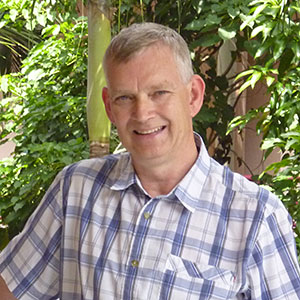Life Sciences staff
Academic staff

Dr Chris Adams
Lecturer in Neuroscience
- Huxley Building : 166
- +44 (0)1782 733943
- c.adams@keele.ac.uk

Professor Pip Beard
Professor of Viral Pathology; Head of School
- Huxley Building O25
- p.m.beard@keele.ac.uk

James Bell
Professor of Entomology
- +44 1782732527
- j.r.bell@keele.ac.uk

Professor Toby Bruce
Professor of Insect Chemical Ecology
Expert in Fall armyworm, food security, crop protection, biological pest control.
- Huxley Building : 227
- +44 (0)1782 734072
- t.j.a.bruce@keele.ac.uk
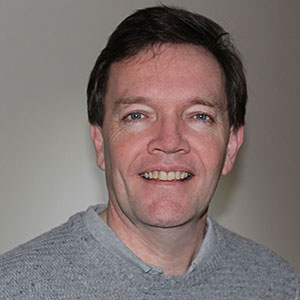
Dr David Buss
Lead Demonstrator
- Huxley Building : 167
- +44 (0)1782 733024
- d.s.buss@keele.ac.uk

Professor Divya Maitreyi Chari
Professor of Neural Tissue Engineering
- Huxley Building : 225
- +44 (0)1782 733314
- d.chari@keele.ac.uk

Dr. Muriel Desbois
Lecturer in Molecular Neuroscience
- Huxley Building: 173
- +44 1782738273
- m.desbois@keele.ac.uk

Douglas Fraser-Pitt
Senior Lecturer in Infectious Diseases
- Huxley Building: 027
- +44 1782732517
- d.j.fraser-pitt@keele.ac.uk

Dr Roberto Galizi
Senior Lecturer in Infectious Diseases
- Huxley Building : 302a
- +44 (0)1782 732745
- r.galizi@keele.ac.uk

Dr Monte Gates
Senior Lecturer in Medicine & Neuroscience
- Huxley Building : 227
- +44 (0)1782 733875
- m.a.gates@keele.ac.uk

Dr Hamish Gilbert
Lecturer in Molecular Cell Biology
- Office - Huxley Building : 302b; Laboratory - Guy Hilton Research Centre
- h.gilbert@keele.ac.uk
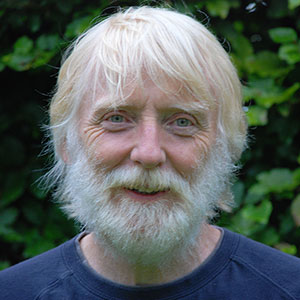
Professor Trevor Greenhough
Professor of Structural Biology
- Huxley Building : 203A
- +44 (0)1782 733405
- t.j.greenhough@keele.ac.uk

Dr Scott Guimond
Lecturer in Bioscience
- Huxley Building : 226
- +44 (0)1782 734663
- s.e.guimond@keele.ac.uk

Dr Najmul Haider
Lecturer in Epidemiology
- Huxley Building
- n.haider@keele.ac.uk

Dr Eleanor Harrison
Lecturer in Ecology
- Hux 174
- +44 1782 731492
- e.harrison@keele.ac.uk

Rebecca Harrison
Lecturer in Biomedical Science
- Huxley Building : 171
- +44 (0)1782 731491
- r.d.harrison@keele.ac.uk

Dr Sarah Hart
Senior Lecturer in Bioscience
- Huxley Building : 301
- +44 (0)1782 733759
- s.r.hart@keele.ac.uk

Dr Sheila Hope
Senior Lecturer in Biochemistry
- Huxley Building : 202
- +44 (0)1782 733674
- s.a.hope@keele.ac.uk

Professor Paul Horrocks
Professor of Molecular Parasitology
- Huxley Building : 226
- +44 (0)1782 734732
- p.d.horrocks@keele.ac.uk
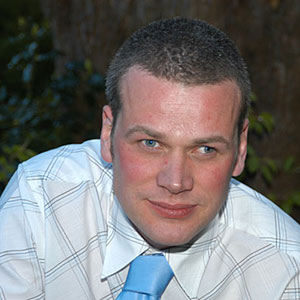
David Hulse
Lecturer in Bioscience
- Huxley Building : 165
- +44 (0)1782 733640
- d.r.hulse@keele.ac.uk

Glenn Hussey
Lecturer; Dean of Education
- Huxley Building : 168
- +44 (0)1782 733880
- g.d.hussey@keele.ac.uk

Dr Stuart Jenkins
Lecturer in Neuroscience
- Huxley Building : 225
- +44 (0)1782 733654
- s.i.jenkins@keele.ac.uk

Dr Nawroz Kareem
Lecturer in Biological Sciences
- Huxley Building : 104
- +44 (0)1782 733671
- n.o.kareem1@keele.ac.uk

Dr Dmitry Kishkinev
Lecturer in Animal Behaviour
- Huxley Building : 026
- +44 (0)1782 732744
- d.kishkinev@keele.ac.uk

Jessica Lenka
Teaching Fellow in Biochemistry and Molecular Biology
- +44 1782732521
- j.l.lenka@keele.ac.uk

Emily Levitt
Postgraduate Research Assistant in Arbovirus Refractory Mechanisms
- +44 1782732526
- e.l.levitt@keele.ac.uk

Dr Marcelo Lima
Lecturer in Biomedical Sciences
- Huxley Building : 203
- +44 (0)1782 734111
- m.andrade.de.lima@keele.ac.uk

Dr Anne Loweth
Senior Lecturer in Biochemistry
- Huxley Building : 212A
- +44 (0)1782 733054
- a.c.loweth@keele.ac.uk

Dr Mirna Maarabouni
Senior Lecturer in Bioscience
- Huxley Building: 164
- +44 (0)1782 733679
- m.m.maarabouni@keele.ac.uk

Dr Naqash Masood
Lecturer in Life Sciences
- Huxley Building : 201
- +44 (0)1782 731500
- n.masood@keele.ac.uk

Dr Ella Maysami
Lecturer in Neuroscience
- Huxley Building : 026
- +44 (0)1782 731484
- s.maysami@keele.ac.uk

Dr Jenny Moran
Lecturer in Physiology & Anatomy
- Huxley Building : 101
- +44 (0)1782 733594
- j.a.moran@keele.ac.uk

Professor Helen Price
Professor of Parasitology
- Huxley Building : 103A
- +44 (0)1782 734219
- h.price@keele.ac.uk

Trish Procter
Lecturer in Biomedical Science
- Huxley Building : 304
- +44 (0)1782 733771
- p.procter@keele.ac.uk

Dr Ilaria Russo
Lecturer in Bioscience
- David Weatherall Building
- +44 (0)1782 733032 | +44 (0)1782 734681
- i.russo@keele.ac.uk

Dr Eunju Jenny Shin
Lecturer in Neuroscience
Expert in Neuroscience
- Huxley Building : 028
- +44 (0)1782 731483
- e.shin@keele.ac.uk
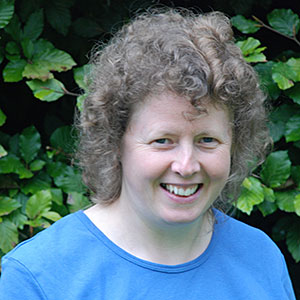
Dr Annette Shrive
Senior Lecturer
- Huxley Building : 212A
- +44 (0)1782 733419
- a.k.shrive@keele.ac.uk

Dr Mark Skidmore
Senior Lecturer in Biochemistry
- Huxley Building : 174
- +44 (0)1782 733945
- m.a.skidmore@keele.ac.uk

Charlie Softley
Lecturer in Pharmacology
- Huxley building: 027
- +44 1782732050
- c.a.softley@keele.ac.uk

Dr Emily Stevens Belcher
Lecturer in Microbiology and Immunology
- Huxley 105
- +44 1782732528
- e.j.stevens@keele.ac.uk
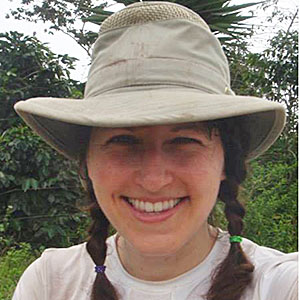
Dr Sarah Taylor
Lecturer in Ecology
- Huxley Building : 029
- +44 (0)1782 733025
- s.l.taylor@keele.ac.uk

Dr Dan Tonge
Lecturer in Biosciences; Faculty PGR Director
- Huxley Building : 122
- +44 (0)1782 733418
- d.p.tonge@keele.ac.uk

Dr Simon Trent
Lecturer in Neuroscience
- Huxley Building : 028
- +44 (0)1782 733497
- s.trent@keele.ac.uk

Dr Trisna Tungadi
Lecturer in Plant Health
- Huxley Building (Room 106)
- t.d.tungadi@keele.ac.uk
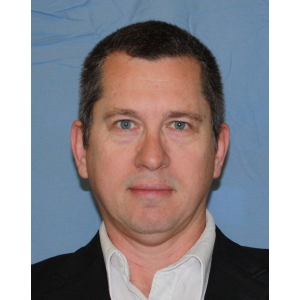
Professor Jeremy Turnbull
Professor of Glycosciences
Expert in Glycosciences
- Huxley Building : 303B
- +44 (0)1782 731493
- j.e.turnbull@keele.ac.uk

Dr David Watson
Senior Lecturer in Biochemistry
- Huxley Building : 169
- +44 (0)1782 733676
- d.watson@keele.ac.uk

Dr Anja Winter
Lecturer in Biophysics/Biochemistry
- Huxley Building : 202
- +44 (0)1782 733117
- a.winter@keele.ac.uk

Dr Marta Wołoszynowska-Fraser
Lecturer in Neuroscience
- Huxley Building : 101
- +44 (0)1782 731497
- m.u.woloszynowska-fraser@keele.ac.uk
Emeritus staff

Dr Srabasti Chakravorty
Lecturer
- Huxley Building : 174
- +44 (0)1782 733685
- s.j.chakravorty@keele.ac.uk

Professor David Furness
Professor Emeritus of Cellular Neuroscience
- Electron Microscope Unit : 33484
- +44 (0)1782 733496
- d.n.furness@keele.ac.uk
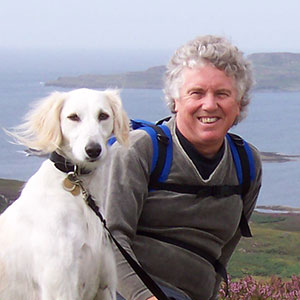
Professor Dave Hoole
Professor of Fish Diseases
- Huxley Building : 104
- +44 (0)1782 733054
- d.hoole@keele.ac.uk

Professor Hilary Hurd
Emeritus Professor of Parasitology
- Huxley Building : 104
- +44 (0)1782 733034
- h.hurd@keele.ac.uk
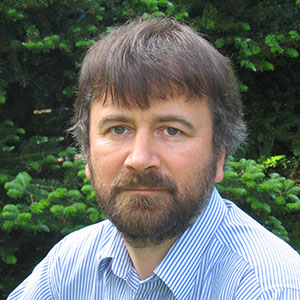
Professor William Kirk
Professor of Applied Entomology
- Huxley Building : 102A
- +44 (0)1782 733517
- w.d.j.kirk@keele.ac.uk

Dr Peter Thomas
Emeritus Reader in Plant Ecology
- Huxley Building : 104
- +44 (0)1782 733034
- p.a.thomas@keele.ac.uk

Professor Gwyn Williams
Emeritus Professor of Molecular Cell Biology
- Huxley Building : 104
- +44 (0)1782 733417
- g.t.williams@keele.ac.uk
Professional Services staff

Susan Andrews
Administrator
- Huxley Building : 020
- +44 (0)1782 731327
- lifesciences.office@keele.ac.uk

Anna Bezzant
Administrator
- Huxley Building : 020
- +44 (0) 1782 733028
- lifesciences.office@keele.ac.uk
Michelle Gower
Administrator
- Huxley Building : 020
- +44 (0)1782 731328
- lifesciences.office@keele.ac.uk

Bernadette Grannon
Careers Consultant
- +44 (0)1782 733858
- b.grannon@keele.ac.uk
Hannah Ireson
Student Experience and Support Officer
- Huxley Building : 103B
- h.l.ireson@keele.ac.uk

Kelly Jeffery
School Operations Officer
- Huxley Building: 020
- +44 (0)1782 732741
- k.l.a.jeffery@keele.ac.uk

Maria Kyriacou
Faculty Operation Manager
- William Smith : WS1.06
- +44 (0) 1782 733318
- m.kyriacou@keele.ac.uk

Lisa Smith
Receptionist
- Huxley Building : 020
- +44 (0)1782 731329
- lifesciences.office@keele.ac.uk
Technical staff

Dave Bosworth
Senior Technician
- Jack Ashley Building JA0.CAF
- +44 (0)1782 731501
- d.h.bosworth@keele.ac.uk

Stefanie Jones
Senior Technician
- Jack Ashley Building : JA0
- +44 (0)1782 734351
- s.m.jones@keele.ac.uk
Research staff

Amy Byrne
Postdoctoral Research Assistant

Jasmina Kuburic
Senior Research Technician

Dr Aisling Ní Cheallaigh
Senior Experimental Officer
- Lennard-Jones: 1.45
- +44 (0)1782 734215
- a.ni.cheallaigh@keele.ac.uk

Dr Amma Simon
Research Associate
- Huxley Building : 169
- +44 (0)1782 734072
- a.l.simon@keele.ac.uk
Postgraduate students
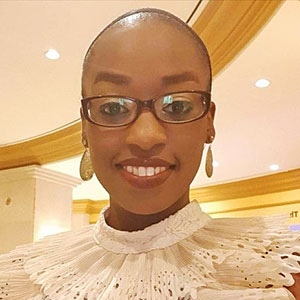
Taniqua Adderley
Supervisor: Mirna Maarabouni
- Huxley Building : 023
- +44 (0)1782 733682
- t.k.adderley@keele.ac.uk

Stacey Collister
Supervisor: Annette Shrive
- Huxley Building : 212
- +44 (0)1782 734441
- s.collister@keele.ac.uk
Anthony Devlin
Supervisor: Mark Skidmore
- Huxley Building : 212
- +44 (0)1782 734441
- a.devlin1@keele.ac.uk

Nadieh Kavousi
Supervisor: Mirna Maarabouni
- Huxley Building : 023
- +44 (0)1782 733682
- n.kavousi@keele.ac.uk

Maria Maroszek
Supervisor: Mirna Maarabouni
- Huxley Building : 023
- +44 (0)1782 733682
- m.r.maroszek@keele.ac.uk

Rebecca Mobley
Supervisor: Paul Horrocks
- Huxley Building: 112
- +44 (0)1782 733944
- r.m.mobley@keele.ac.uk
Courtney Mycroft-West
Supervisor: Mark Skidmore
- Huxley Building : 212
- +44 (0)1782 734441
- c.j.mycroft-west@keele.ac.uk

Rebecca Molena
Supervisor: Helen Price
- Huxley Building: 112
- +44 (0)1782 733944
- r.a.molena@keele.ac.uk

Anthea Mutepfa
Supervisor: Chris Adams
- Huxley Building : 112
- +44 (0)1782 733944
- a.r.mutepfa@keele.ac.uk

Cátia Nascimento
Supervisor: Professor Frederic Tripet
- Huxley Building : 112
- +44 (0)1782 733944
- c.l.d.nascimento@keele.ac.uk

William Neale
Supervisor: Trevor Greenhough
- Huxley Building : 212
- +44 (0)1782 734441
- w.a.neale@keele.ac.uk

Emmanuel Ottih
Supervisor: Frederic Tripet
- Huxley Building : Portakabin 3
- +44 (0)1782 733672
- e.c.ottih@keele.ac.uk
Emily Pinter
Supervisor: Mark Skidmore
- Huxley Building : 112
- +44 (0)1782 733944
- e.a.m.pinter@keele.ac.uk

Adetayo T Sadiq
Supervisor: Ray Amith
- Huxley Building : 024
- +44 (0)1782 733691
- a.t.sadiq1@keele.ac.uk
Emily Scanlon
Supervisor: Annette Shrive
- Huxley Building : 212
- +44 (0)1782 734441
- e.scanlon@keele.ac.uk
School of Life Sciences,
Huxley Building,
Keele University,
Staffordshire,
ST5 5BG
Tel: +44 (0) 1782 734414
Enquiries:
Tel: +44 (0) 1782 734414
Email: lifesciences.office@keele.ac.uk







